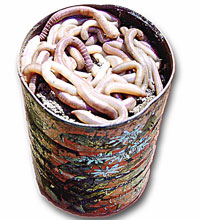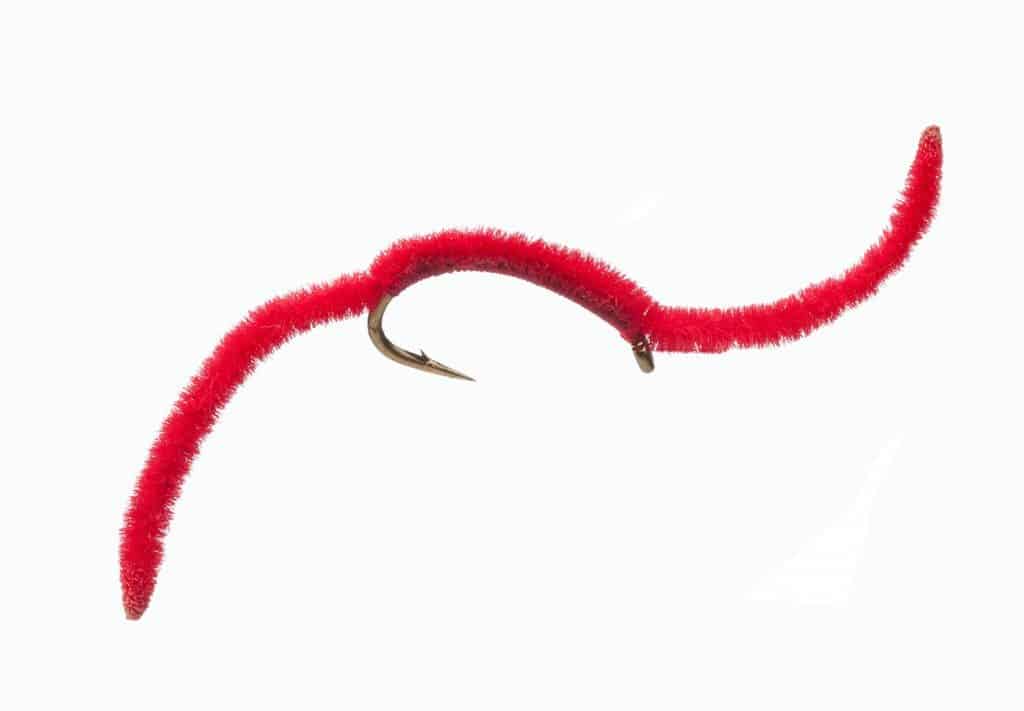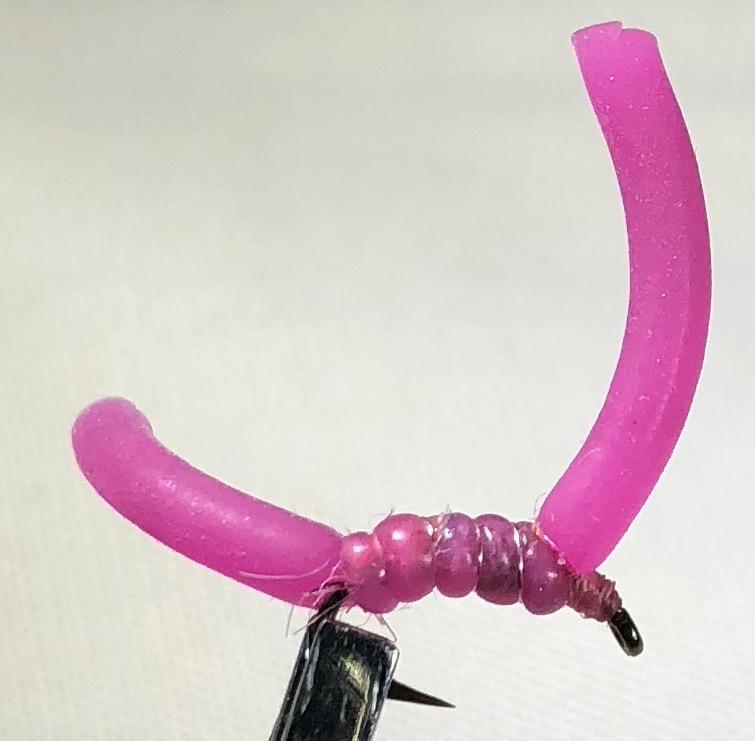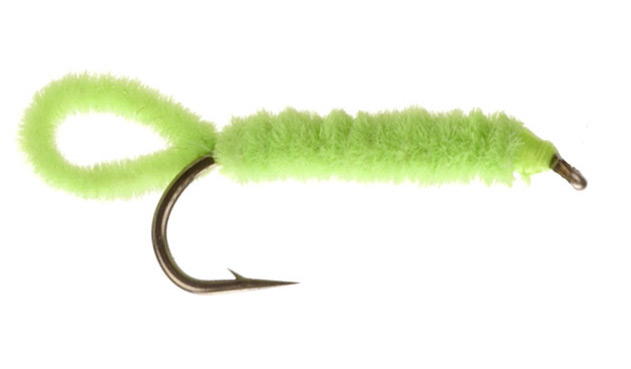
The thought of fishing with a worm pattern makes many fly fishing purists cringe. I have to admit, I sometimes feel a little dirty about it but I’m not sure why. I think it’s kind of like the disdain some fly fishers have for strike indicators, probably due to their similarity to bobbers. Bobbers and worms are the tools of bait fishermen and fly fishers don’t like the thought of doing ANYTHING akin to bait fishing!
The thing is, fish eat worms – even the sophisticated trout. When we choose most fly patterns, we are doing so because they resemble something we think the fish is eating. Therefore, why should fly patterns that imitate worms be any different? Maybe it’s just because the patterns for worms just don’t have the same elegance and beauty as say, a traditional wet fly pattern.
Maybe it would help to verbally justify it when you tie on a worm pattern. That’s what I do. In much the same way I acknowledge eating that piece of pie as a bad decision right before I eat the piece of pie, I always declare that I’m going to fish junk before I put on a worm. There’s just something about that self-awareness that allows us to forgive ourselves and sleep at night. And when it comes to fishing the worm, it doesn’t hurt that they flat out catch fish!

Just like any fly pattern, a worm imitation isn’t magic. You’re not going to instantly catch a bunch of fish because you’re using a worm. You still have to do all of the other things right like approach and presentation. And sometimes, even when everything is done correctly, the fish may just not be feeding and/or they may not be feeding on worms.
Fish that live in streams with rock bottoms and banks are simply not going to see as many worms as fish in streams with silt bottoms because it’s not their habitat. In the mountains, I have the best success with worms after a good rain. But that’s probably true about anywhere. We’ve all seen an abundance of worms on our sidewalk or driveway after a good rain because they are flooded out of their “holes.” The same thing happens on a stream bank and many of those worms end up in the stream where fish are looking for them.
Under normal conditions, I don’t have as much success with worm patterns, at least with wild trout, or even holdover stocked trout. But freshly stocked trout will often eat a worm pattern with reckless abandon simply because it’s colorful. Fresh stockers tend to be suckers for anything bright or shiny. However, with wild trout, even when they don’t eat the worm, I think it gets their attention.
I will routinely fish a pink or red worm as the top fly of a double nymph rig and for the bottom fly, I’ll use a more subtle, maybe smaller pattern like a Pheasant Tail. Over the years, it’s happened way too many times to be coincidence. I’ll fish a fly like a Pheasant Tail by itself or in tandem with another nymph with no success. When I re-rig and use that same Pheasant Tail below a worm, it suddenly begins catching fish! I don’t think that’s necessarily unique to worm patterns, though. I’ve had similar results using various bigger, brighter flies above smaller, subtler ones.

There are a lot of different worm patterns out there, but there’s only so much artistic interpretation a fly tyer can have when it comes to worms! The San Juan Worm has long been the gold standard, but more recently, the Squirmy Worm has won favor with many anglers. They are essentially the same pattern but with different body materials. The traditional San Juan Worm has a body made of vernille or micro-chenille, which has less movement but is more durable. The Squirmy Worm uses a stretchy, silicone material, which offers a lot of movement but can come apart after several fish. Pick your poison.
In any case, there are a number of different colors available. Pink and red are the two best colors for me. However, colors like purple, orange and brown have all had their moments.

And it has certainly been well documented that a Green Weenie is a killer fly in the Smokies. While it fits a little more loosely in the worm category, it still very much fits. Most commonly thought of as an inchworm imitation, it has a smaller, more robust profile than most worms and is most productive in a chartreuse color.

